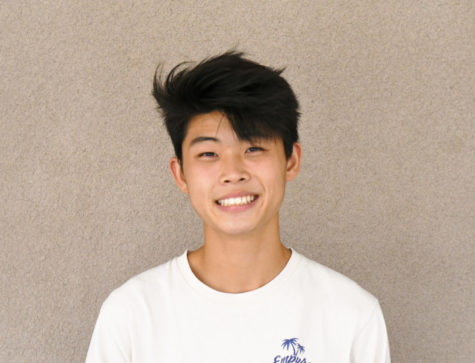Wetherell improves localization at NG internship
April 8, 2022
In his junior year, PJ Wetherell (12) was one of a select few students in PUSD to be admitted into a two-year Northrop Grumman internship. The first year of the internship consisted of orientations and lectures that took place once a month, covering topics ranging from aeronautical systems to the James Webb Space Telescope. Wetherell, now in the second year of the program, has spent the past year designing and prototyping a project that he will present before a panel of Northrop Grumman internship directors in May.
Wetherell began working on his project under Northrop Grumman’s System V.
“In System V, you start by defining the project you want to work on and its various system requirements,” Wetherell said. “For example, it has to be set-up-able and taken down in a certain amount of time and its software shouldn’t be too hard to use. After you finish this part, you use these parameters as a guide and start moving into prototyping.”
Wetherall’s project centers on four retroreflective balls that reflect light with minimal amounts of scattering.
“I’ve wanted to create a software that tracks the movement of an object in 2d space, based on retroreflective balls on a surface,” Wetherell said. “Using this, I can set up retroreflective balls on four corners of a plane, put an object in the middle, and basically tell you where exactly that thing is, in the plane created by the four balls.”
Wetherell drew inspiration for his project from his involvement in FIRST Tech Challenge, or FTC, a competition that challenges students to build a robot able to fulfill a specific task. Robots in FTC need to have strong localization, meaning that they need to know their specific location with respect to their surroundings at all times.
“The idea was that I would create something to help people be able to better tune their localization systems and be able to be more successful in robotics competitions,” Wetherell said. “Hopefully over the summer, I have enough time to finalize it enough to open source it and release it to the public.”
Wetherell then began a series of tests examining the individual parts of the program to determine if the whole program could work. For instance, if the system wasn’t able to detect a single retroreflective ball, it wouldn’t be able to find the four reflective balls in the corners of the plane.
Being a mechanical lead for his FTC in past years, Wetherell was already well versed in both the hardware and software aspects of his project. However, he wasn’t formally trained in the planning of larger projects.
To aid him, the Northrop Grumman program provided Wetherell with a mentor to aid him in his developmental process.
“My mentor made sure that everything that I wanted to do was possible so that I wouldn’t overinvest time into an idea,” Wetherell said. “When you’re working on a project, sometimes it’s easy to assume that you’ll be able to fix various problems after you finish prototyping. But if you’re working at a company that’s investing resources into your project, you need to make sure you’re not just throwing money down a hole.”
As the program draws to a close, Wetherell is grateful for the real-world experience this program has afforded him.
“It’s definitely been helpful in terms of understanding the engineering design process,” Wetherell said. “It’s very easy as an amateur FTC team to just go in for lots of hours to get results as opposed to doing the planning. This has taught me to be more methodical with every project I start.”


